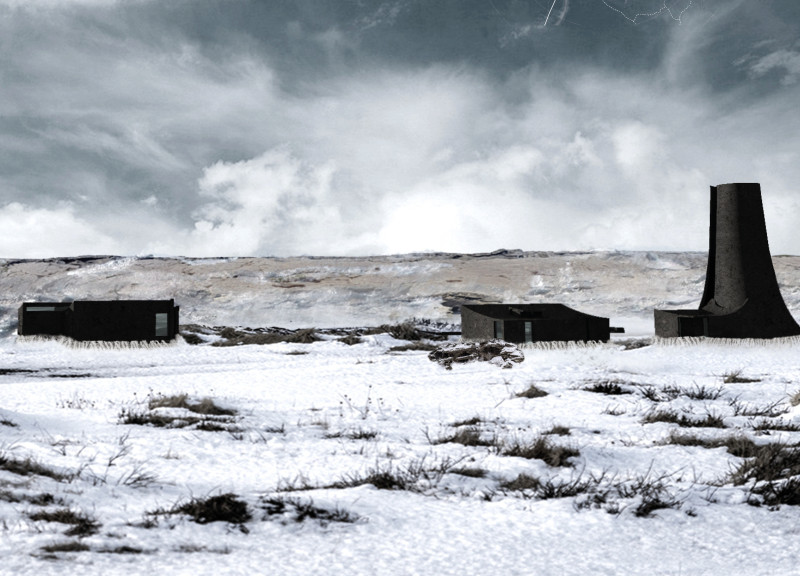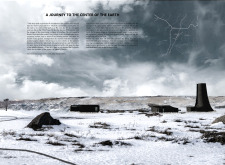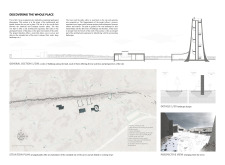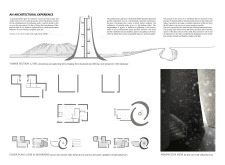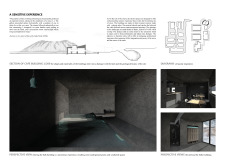5 key facts about this project
The design draws inspiration from the concept of a passage to the center of the Earth, a theme found in the writings of Jules Verne. Set in Iceland, the project is located on a fault line between the American and European tectonic plates, utilizing the distinct geological features of the area. The structure serves to educate and engage visitors, inviting them to explore the geological history of the landscape.
Gateway Structure
At the center of the design is a tower that functions as a gateway to the caves below. Its shape is thoughtfully crafted to enhance the visitor experience, encouraging exploration through varying effects of light and shadow. The tower’s presence is intended to blend with the nearby Hverfjall volcano, allowing it to stand out while also connecting with the natural surroundings.
Interconnected Spaces
The layout includes a series of interconnected spaces that create a winding experience for those who enter. This fragmentation allows for different activities and encourages visitors to discover the diverse geological features of the site. Paths guide individuals through dramatic landscapes, including unique volcanic formations and native flora, linking the architectural journey with the rich geological narrative of the region.
Sensory Experience
Interior spaces are designed to invoke the feeling of being in a cave, ensuring an immersive experience. Carefully placed openings provide views of the outdoors, with walls arranged to create intriguing patterns of light and shadow. This design choice enhances the atmosphere, fostering a strong connection between visitors and the natural environment.
Geological Education
An educational aspect is central to the design through an exhibition hall that focuses on the geological characteristics of the fault line. This element adds depth to the visitor experience, offering insights into Earth’s processes while reinforcing the relationship between the architecture and its geological context.
Dark textured concrete made with volcanic ashes is used to blend the structure with the environment. This material choice reflects the unique geological heritage of the site while contributing to an overall visual narrative. The careful interplay of form and materiality brings attention to the Icelandic landscape, enhancing the architectural experience.


